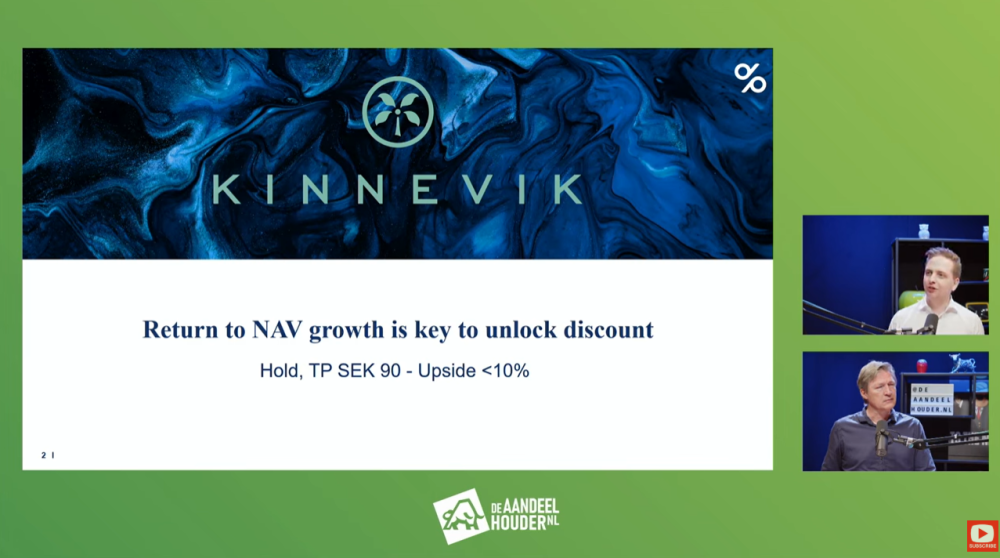BERNARDS WEEKLY: Het was een onbewogen jaar
Een korte terugblik op het jaar kan geen kwaad. De aandelen hebben het zoals door mij verwacht (eerlijk is eerlijk) goed gedaan. In juli schreef ik dat de S&P 500 naar de 2700 punten kan volgend jaar, in tegenstelling tot veel zwartkijkers. De S&P 500 staat er echter al bijna, dus het gaat wel erg goed. Waar ik flink naast zat, was mijn verwachte stijging van de Duitse inflatie. Ondanks een laagterecord werkloosheid van 3,6% en een participatiegraad die het hoogst is sinds de metingen begonnen, blijft de inflatie aan de lage kant en kan Draghi ongestoord doorgaan met de rente laag te houden. Toch lijkt me dit het thema van het komende jaar. Terwijl de Fed in de VS in 2018 verwacht nog eens driemaal de rente te verhogen en QE af te bouwen, blijft de ECB een tegengesteld beleid voeren. Hoewel Draghi tot nu toe steeds gelijk heeft gehad, moet ook bij hem het zweet langzaam gaan uitbreken. Hoe lang zal de inflatie nog laag blijven? Zal de lange rente meestijgen met de korte rente? Zal het komend jaar net zo’n lage volatiliteit kennen?
Een interessant thema hierbij is het effect van de belastingverlagingen op de economie. De theorie, is dat herverdeling van vermogen (door belastingheffing en uitdeling aan minder rijken) leidt tot meer omzet en winst doordat het geld wordt uitgegeven in plaats van gespaard. Als, zoals in de VS, vooral de vermogenden nóg meer overhouden, is de vraag gerechtvaardigd of zij het extra vermogen gaan uitgeven of investeren. Er dient nu eenmaal een gezonde balans tussen consumeren en investeren/sparen te zijn voor een gezonde economie. Als die zoek is, zoals in China, waar te veel wordt geïnvesteerd en te weinig geconsumeerd, dan loop je het risico, dat de investeringen weinig opleveren. Er wordt in China hard aan gewerkt om die onbalans te herstellen (Voorzichtigheid, Prudentia is een van de vier Kardinale Deugden van Aristoteles).
Amerika doet het tegenovergestelde, zoals wel vaker het afgelopen jaar. Door de vermogenden rijker te maken, draagt deze geldstroom er niet toe bij dat bedrijven meer omzet maken, of het moeten de producenten van luxeauto’s, huizen en superjachten zijn waar het geld naar toe gaat. Wel zal de winst toenemen als gevolg van lagere belasting, maar het is de vraag of dat een positief economisch effect zal hebben op middellange termijn. Nu ben ik van nature een economisch liberaal, maar we worden allen beter af als er een gematigde (Temperantia) en niet-corrupte herverdeling (Iustitia) (dus geen te groot drukverschil in de pijplijnen van de economie en geen lekkage) bestaat, die het evenwicht tussen consumeren en investeren optimaliseert. Daar is niets economisch links of rechts aan. Dat is gewoon een natuurkundig feit.
‘The winners takes it all’, zoals door Facebook, Google en Apple, is dus geen goede ontwikkeling. Vandaar ook dat omzet en winstbelasting in de economie betaald moeten worden waar ze gemaakt worden en de winst niet onbelast bijeengeveegd moet worden ten gunste van de aandeelhouder, waar die ook moge zijn. Hoewel het economisch ethisch verantwoord lijkt te zijn, zeker in deze kersttijd, is het dus gewoon natuurkundige logica, die dit vereist. En wat moed (Fortitudo, als vierde Kardinale Deugd) om er iets aan te doen.
In dit kader tot slot, een artikel in de FT met verwijzing naar een onderzoek (http://www.frbsf.org/economic-research/files/wp2017-25.pdf ), waaruit blijkt dat Thomas Piketty (kent u hem nog?) wel degelijk gelijk lijkt te hebben, namelijk dat rendement op vermogen sneller toeneemt dan de economische groei. Nu in een nog groter allesomvattend onderzoek, waarbij nog een interessante constatering werd gedaan. De correlatie (samenhang in bewegelijkheid) van aandelenmarkten van de verschillende landen is gestegen van 0,4 naar 0,8 (waarbij 1 een perfecte samenhang kent). De aandelenmarkten bewegen dus steeds meer in de gelijke richting. Niet zo gek in een wereldeconomie die steeds verder globaliseert. Dit in tegenstelling tot vastgoed, dat een lokaler karakter lijkt te hebben. Dus voor een goede spreiding in de beleggingsportefeuille is het beter om vastgoed te spreiden over regio’s dan aandelen. Interessant genoeg om daar volgend jaar dieper op in te gaan. Want anticorrelatie is een ander thema voor de komende jaren. Net als de verhouding tussen investeren en consumeren. Interessante tijden, dat zeker.
Fijne feestdagen en tot volgend jaar.
Bernard
Week 51
Take the very long view on asset prices – FT- Gillian Tett
Many asset managers are taking stock of the bizarre year that was 2017. If they are feeling broad-minded, some may also be pondering the story of the decade since the great financial crash.
However, if you want to get a truly thought-provoking perspective on portfolio performance — or just spark some conversation over the holiday — my advice would be to widen the lens even further, to the past 145 or so years.
Yes, you read that right. This week, a group of economists in America and Germany published the results of a massive and granular number-crunching exercise to track the performance of all the big investible asset classes (bonds, bills, equities and housing) in 16 advanced western economies from 1870 to 2015.
The authors of “The Rate of Return on Everything, 1870-2015” — Oscar Jorda, Katharina Knoll, Dmitry Kuvshinov, Moritz Schularick and Alan Taylor — have not done this for narrow investment purposes. Instead, they hope to contribute to the academic debates which are now raging about whether secular stagnation — the long-term structural decline in aggregate demand identified by former US Treasury secretary Lawrence Summers and others — really exists, and whether the French economist Thomas Piketty is correct to argue that returns on capital always outstrip growth.
And in that respect, the conclusions are thought-provoking, albeit inconclusive. The data set shows that returns on assets do tend to outstrip growth in the long run, as Prof Piketty argues. However, there are some bafflingly volatile swings. In plain English, this means that rich people holding assets tend to get richer faster than the economy grows, fuelling inequality. However, this pattern is so erratic that the economists suggest there is still a “conundrum” about why it exists.
However, what most investors will find more interesting than the economic arguments is that this data set — which seems to be the largest of its kind ever assembled — also reveals at least three points about investible assets.
First, equities and housing have very different levels of correlation. From a (very) long-term perspective, both asset classes have produced similar returns since 1870, averaging out at about 7 per cent per annum across these 16 countries. But equity markets globally have become tightly interlinked with each other: country co-movements rose from 0.4 in the middle of the previous century to 0.8 this decade.
Property markets, by contrast, are not correlated: country co-movements have stayed between zero and 0.2 in the past 50 years. Moreover, property is also only lightly correlated to business cycles and other asset classes. This suggests that if an investor wants truly to diversify their portfolio, they should look beyond securities; buying real estate everywhere from Manhattan to Mongolia was a better hedge in the 20th century.
A second fascinating implication is that today’s ultra-low interest rate world only looks bizarre if you take an edited vision of history. Yes, real rates are very low today compared with the peacetime years in the 20th century. But real returns on bonds and bills were much lower during the first and second world wars, tumbling to about minus 4 per cent (compared with 3 per cent for bonds in 2015, and zero for bills).
Returns on safe assets were also low in the aftermath of the two world wars, and they fell in the late 19th century, too. So, the authors suggest, instead of simply asking why real rates are so low today, maybe we need to ask “why the safe rate [was] so high in the mid-1980s”. The late 20th century might have been more of an aberration than today.
That highlights a third key point: the spread on returns between risky and safe assets has been surprisingly volatile in the past 145 years. However, this is not due to the behaviour of risky assets — these returns tend to move in fairly well-worn cycles. Instead, what is more notable is the behaviour of supposedly safe assets: although these returns are often stable, they periodically display unexpectedly massive swings (usually because war or financial shock has suddenly made “safe” assets seem anything but safe).
That last lesson is worth pondering now. This year, most investors have been mesmerised by the soaring price of risky assets, such as US equities. But the fact that supposedly safe bond prices have stayed so high is striking too, particularly given the stratospheric levels of debt and the turning US interest rate cycle.
There is a fair chance this pattern will continue in 2018, unless central banks suddenly accelerate the tightening cycle. But if the past 145 years are any guide to the future, it can be a dangerous mistake to assume that “safe” assets will always be boring in the long term, let alone a reliable hedge against individual country risk. Investors forget that at their peril, particularly in a 21st-century world where geopolitical tensions are rising — along with the level of debt.
De week vooruit: welke invloedrijke cijfers worden de komende week gepubliceerd?















